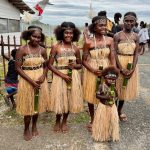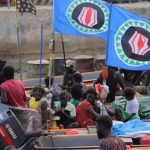While there is a lot of frivolous elements to our Extremes of Japan Tour, we also do some fairly serious stuff, with this year timed to coincide with the 80th anniversary of the Hiroshima Atomic Bombing, as well as that of Nagasaki.
And it was certainly a special and eventful event with not only thousands of people taking part, but it also being a solemn reminder of the horrors of nuclear war. There were also a number of other to some extent weirder events and happenings which made this a very unique YPT Experience.
The Hiroshima Atomic Bombing
At 8.15 am on August 6th 1945, the United States dropped the first ever atomic bomb used in warfare on the Japanese city of Hiroshima. The bomb, codenamed Little Boy, detonated directly above the city centre, instantly vaporising tens of thousands of people and flattening almost everything within a two kilometre radius.
But while the blast itself was horrific enough, it was the aftermath that truly turned Hiroshima into a symbol of hell on earth. The fires, the radiation burns, the survivors with melted skin wandering aimlessly among ruins. Thousands more died in the days, weeks and months that followed due to radiation sickness, infections and just being forgotten.
The exact death toll is still disputed, but most estimates put it somewhere between 130,000 and 150,000 people. It was the first time a nuclear weapon had been used in war, and its effects were both immediate and long-lasting. What makes Hiroshima especially unique though is not just that it was nuked, but that it rebuilt itself. The modern city is clean, modern and very much alive. That juxtaposition makes visiting it even stranger.
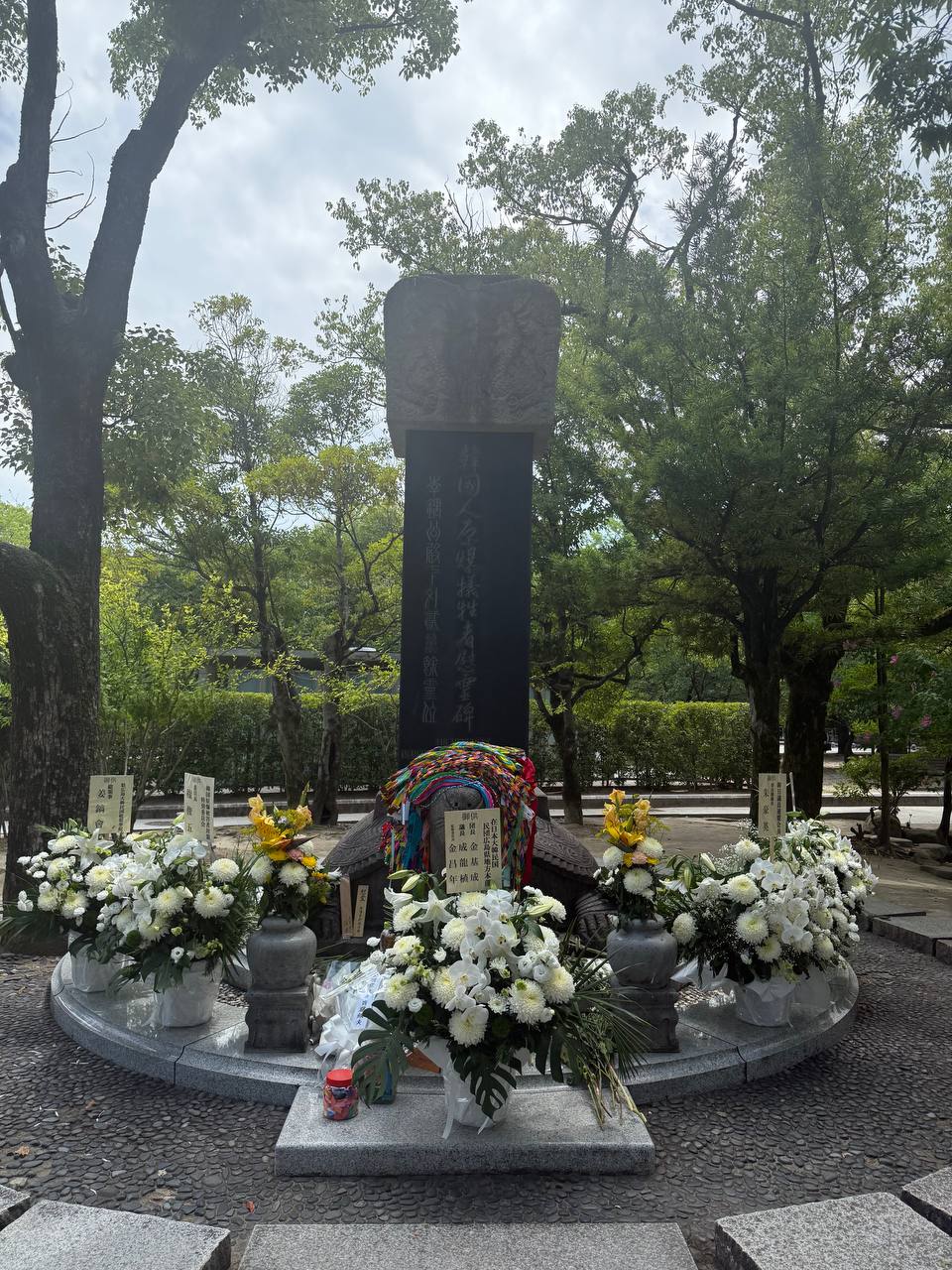
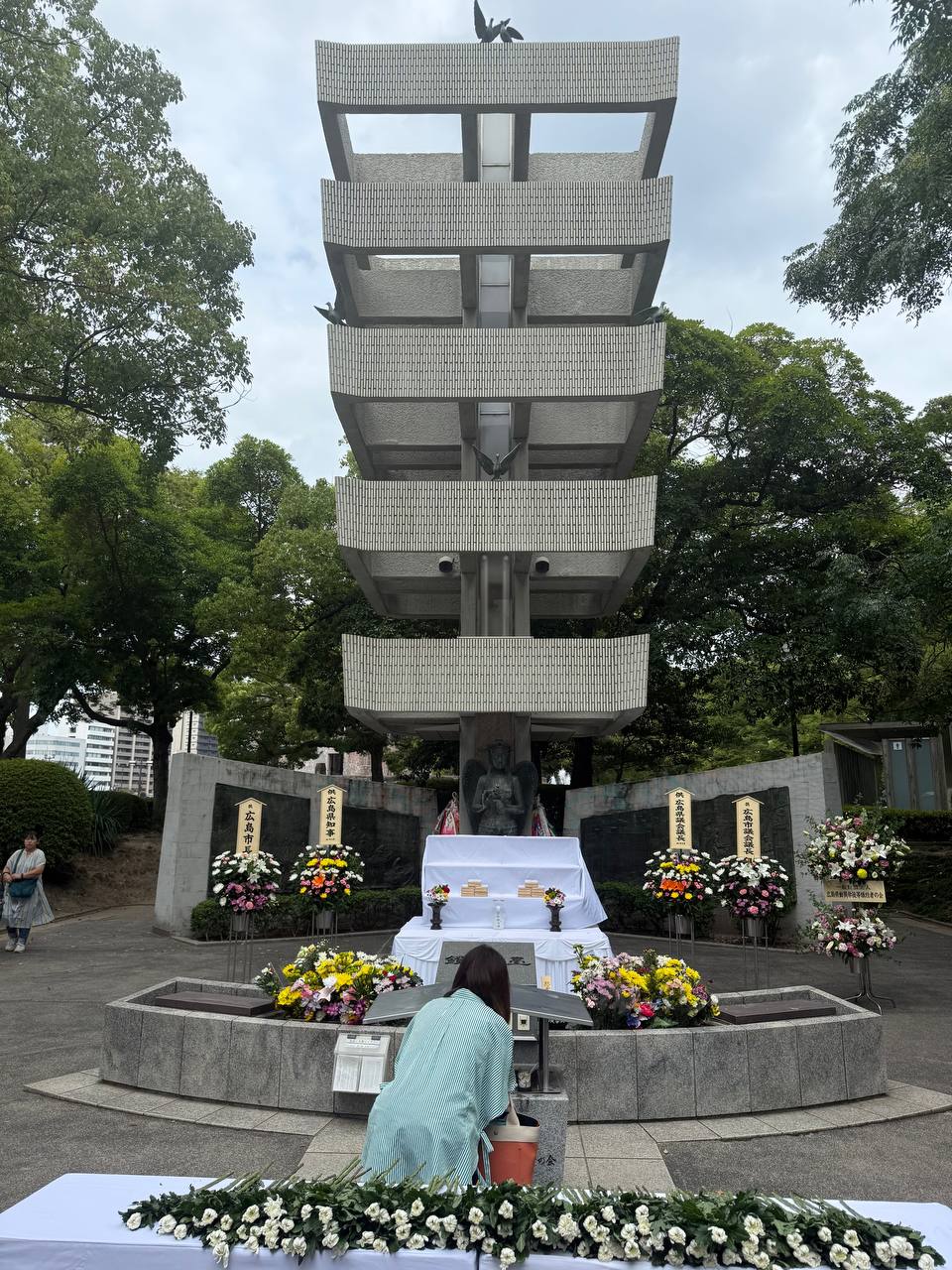

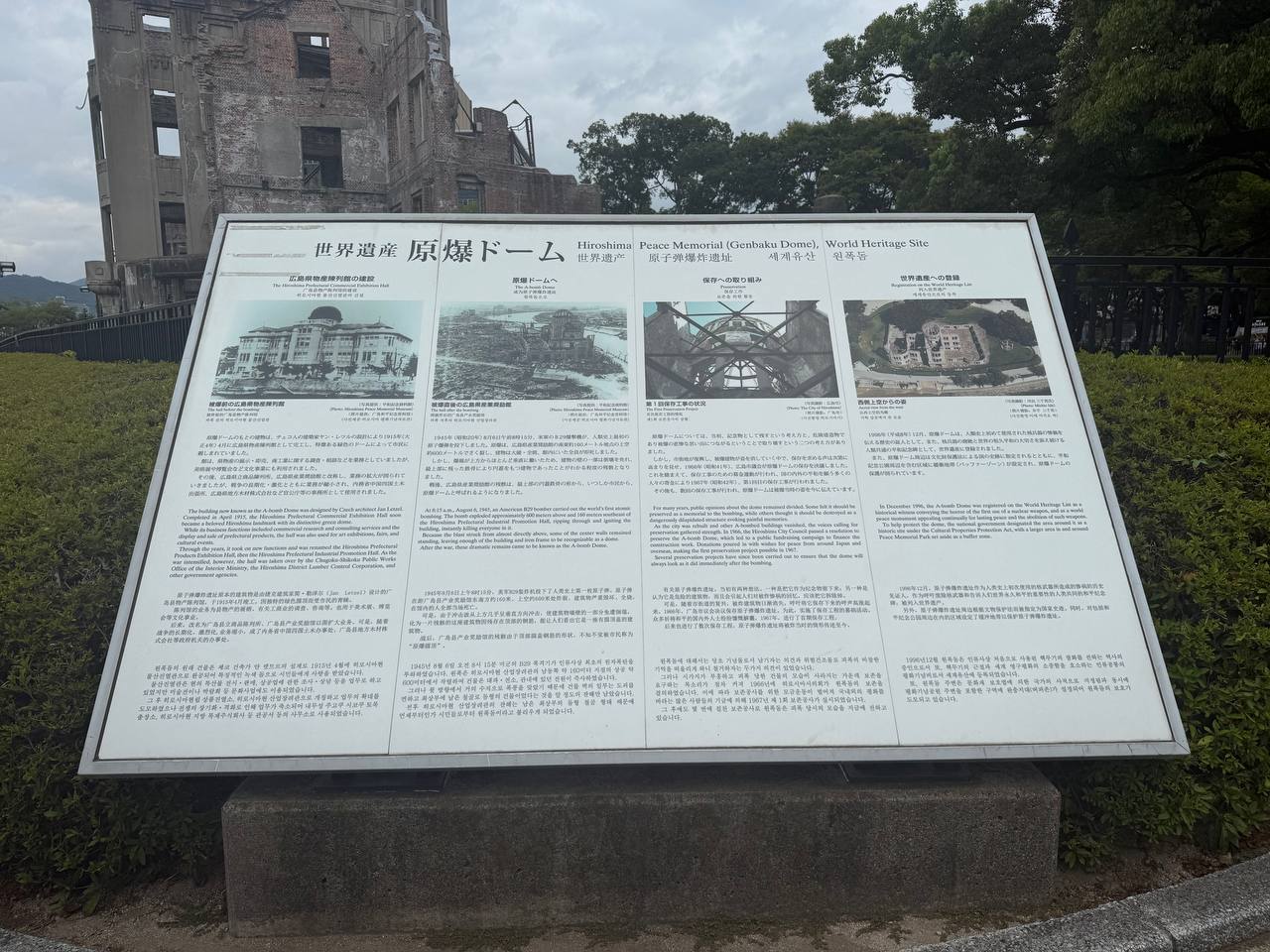
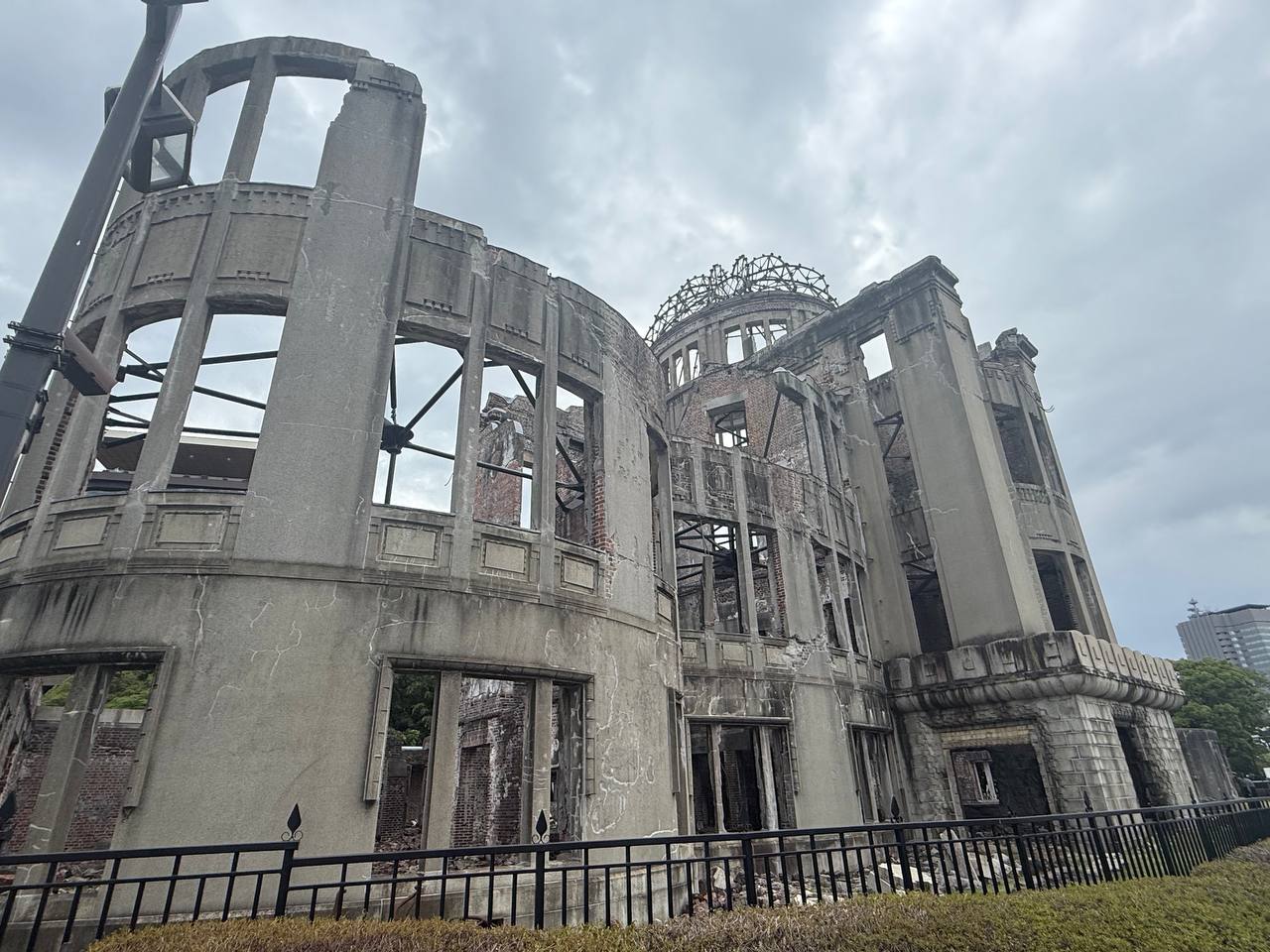
The Peace Centre, Museum, Dome and much more
If you have ever seen a picture of Hiroshima post-blast, chances are it was of the skeletal remains of the Atomic Bomb Dome (原爆ドーム – Genbaku Dōmu). This building was originally the Hiroshima Prefectural Industrial Promotion Hall, located almost directly beneath the hypocentre. Somehow the structure avoided total collapse and has been left exactly as it was to serve as a permanent reminder of the bomb. It was named a UNESCO World Heritage Site in 1996 and today it stands as one of the most iconic symbols of nuclear destruction on the planet.
The surrounding area was later turned into the Hiroshima Peace Memorial Park (広島平和記念公園 – Hiroshima Heiwa Kinen Kōen), established in 1954. It’s a huge space that stretches from the Dome to the museum and is absolutely packed with monuments, memorials and symbolic structures. It’s free to enter and very walkable, although also extremely busy on any anniversary day or public holiday.
The most important part of the park is the Hiroshima Peace Memorial Museum (広島平和記念資料館 – Hiroshima Heiwa Kinen Shiryōkan), opened in 1955 and later expanded multiple times. This is where you get the no-bullshit version of what the atomic bomb did to this city. Burnt clothes, melted lunchboxes, fused glass, skin hanging from mannequins and some photos that quite honestly are more shocking than anything you will see in a war film. It is a hard place to walk through, but also one of the best curated museums I have ever visited. It is not subtle, and nor should it be.
Next to the museum is the Peace Memorial Hall for the Atomic Bomb Victims (国立広島原爆死没者追悼平和祈念館 – Kokuritsu Hiroshima Genbaku Shibotsusha Tsuitō Heiwa Kinenkan). This part often gets overlooked by tourists but is arguably the most moving section. It’s quiet, underground, and dedicated to listing the names and showing the faces of all known victims. There is a circular chamber with a panoramic photo of Hiroshima taken after the bomb, made from 140,000 tiles, symbolising the number who died by the end of 1945. You can sit here in silence and it properly hits you.
And that’s not all. There are dozens of smaller but important monuments scattered throughout the park. These include:
- The Cenotaph for the A-bomb Victims (原爆死没者慰霊碑 – Genbaku Shibotsusha Ireihi), which is a concrete arch structure that holds the registry of all known victims. It’s designed so that if you stand at the right angle, you see the flame, the Cenotaph, and the Dome all lined up.
- The Flame of Peace (平和の灯 – Heiwa no Tomoshibi), which will supposedly burn until all nuclear weapons on Earth are gone. So yeah, expect that flame to be burning for a while.
- Children’s Peace Monument (原爆の子の像 – Genbaku no Ko no Zō), which commemorates Sadako Sasaki, the girl who famously folded a thousand paper cranes before dying of leukaemia caused by radiation. This monument is usually surrounded by thousands more origami cranes sent from around the world. Kids love this part, as do tour groups.
- Peace Bell (平和の鐘 – Heiwa no Kane), which you can actually ring. It is not some tiny bell either. It is massive, it echoes, and it sounds like something between a Buddhist temple and a warning siren. Everyone rings it, even if they pretend not to want to.
- Memorial Tower to the Mobilised Students (動員学徒慰霊塔 – Dōin Gakuto Ireitō), dedicated to the thousands of school students who were drafted into labour and died during or after the bombing. Another section people usually walk past without reading.
- Korean A-Bomb Victims Memorial (韓国人原爆犠牲者慰霊碑 – Kankokujin Genbaku Giseisha Ireihi), acknowledging the over 20,000 Koreans living in Hiroshima at the time, many of whom also died in the blast. It took decades of activism before this monument was even allowed inside the park. Not exactly a proud moment for Japan – particularly as “forced laborers” are not even mentioned.
Click to read about the Chongyron Koreans.
There are also trees that survived the blast, known as hibaku jumoku (被爆樹木), or A-bombed trees. These have little signs explaining how they regenerated after being scorched, and they’ve become a sort of metaphor for the city itself.
Basically, if you think the Peace Park is just a quick photo op of the Dome and a walk through a museum, you are massively underestimating the size and depth of this place. It is one of the most intense and complex memory landscapes anywhere in Asia. You could spend a full day here and still miss stuff.
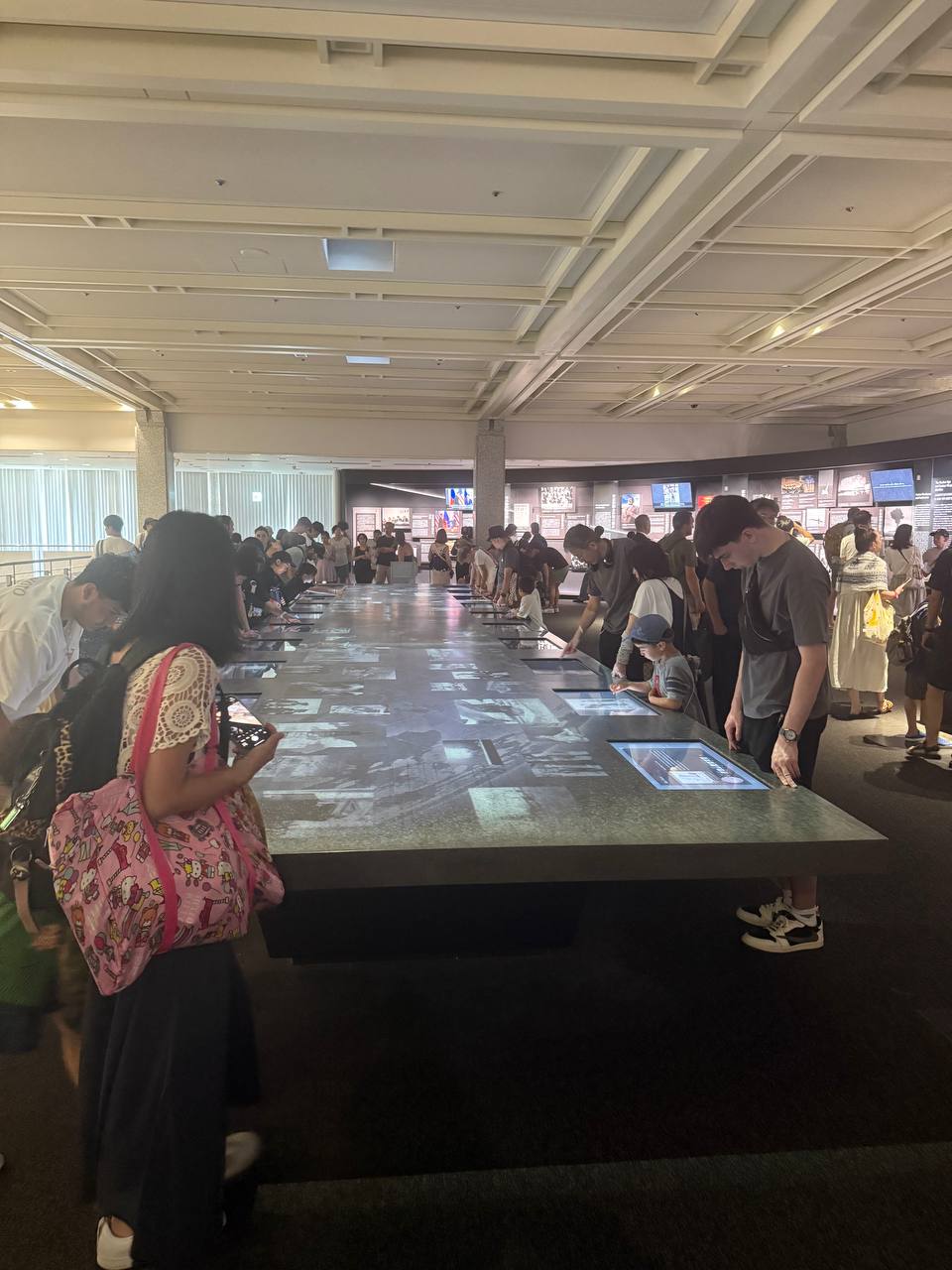
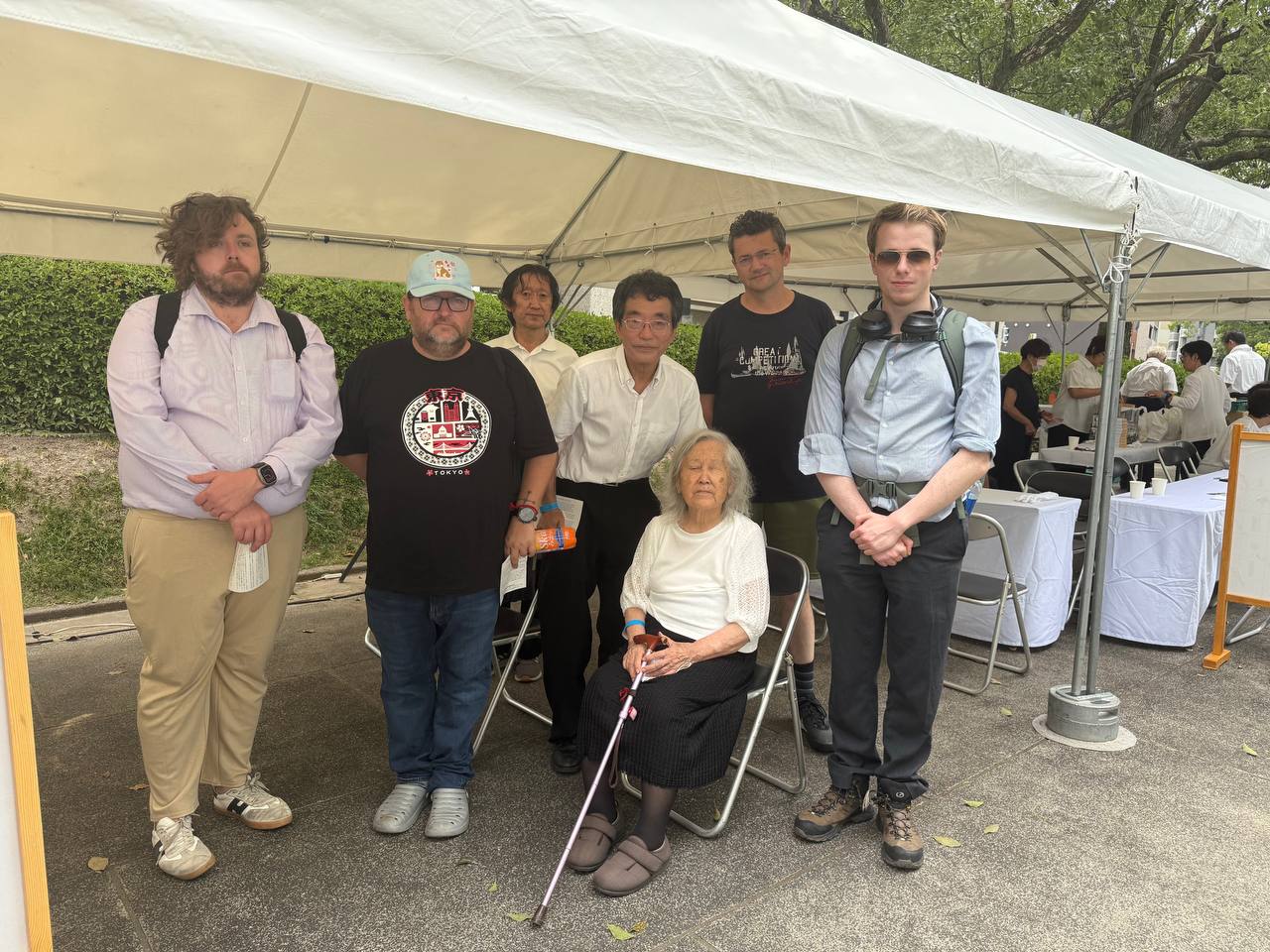
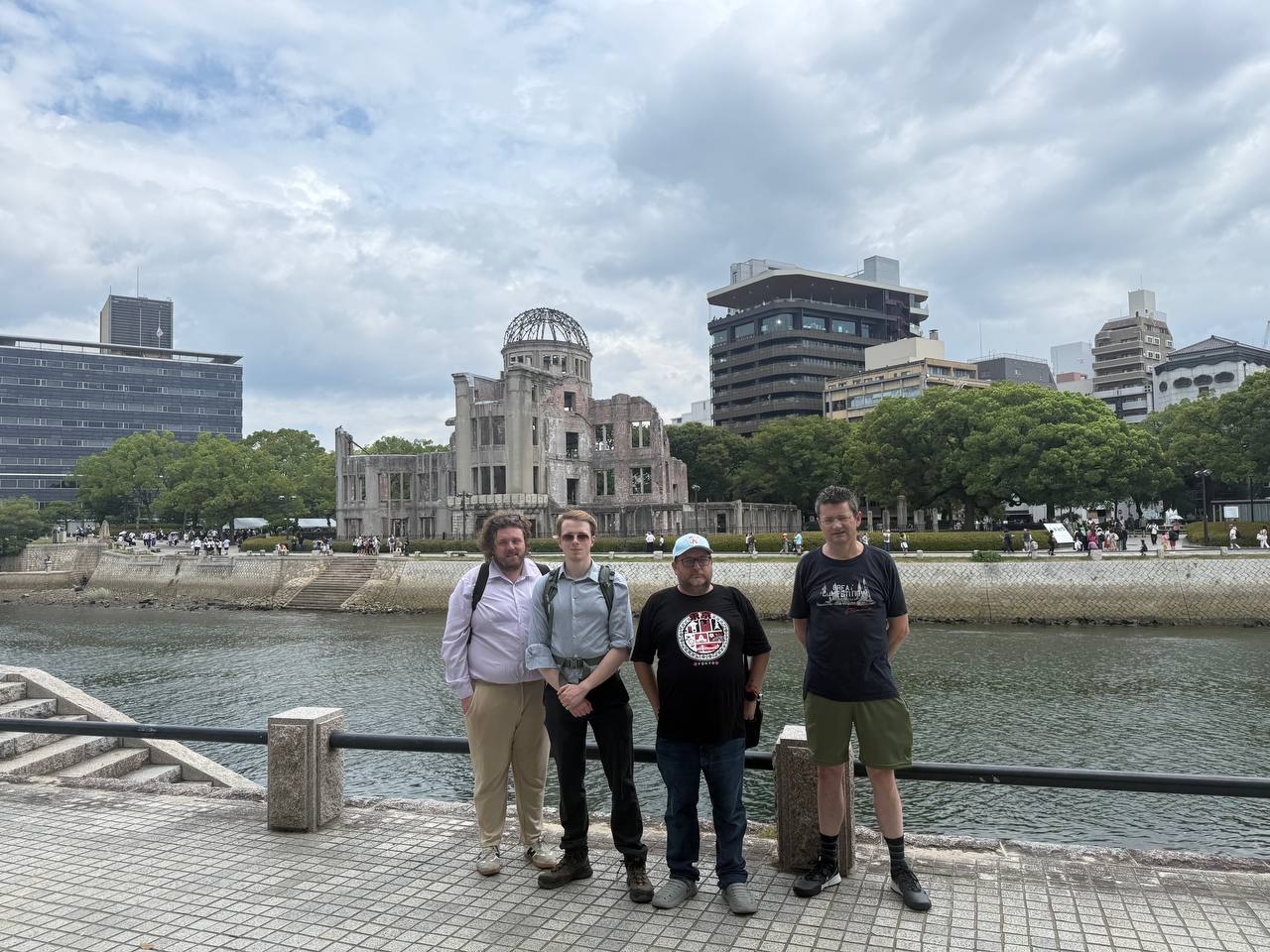

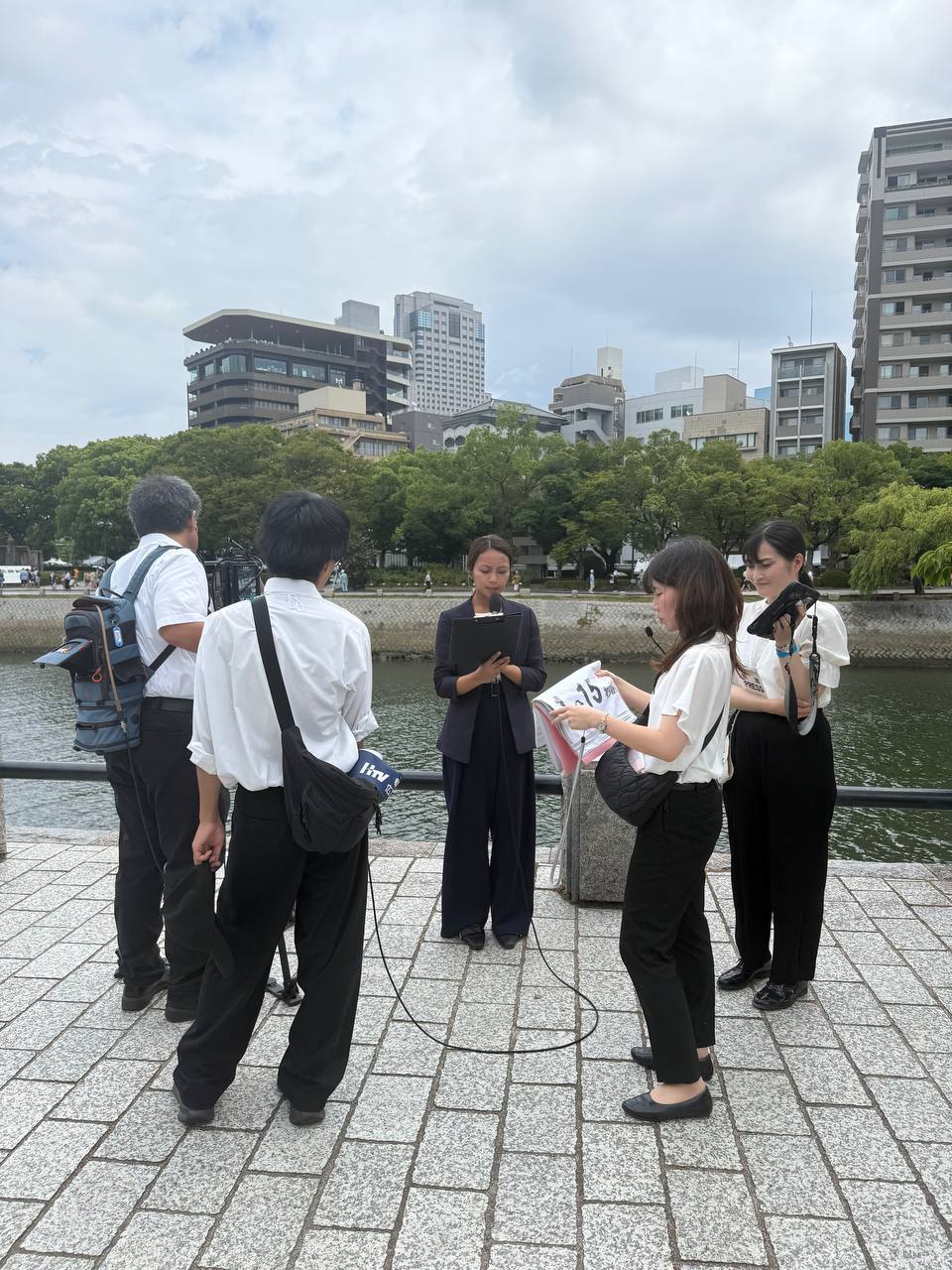
The 80th Anniversary of the Hiroshima Atomic Bomb
The anniversary itself began in the early hours, with the main ceremony taking place at 8.15 am to mark the exact moment the bomb was dropped. The event was attended by survivors, families, schoolchildren, monks, leftists, tourists, peace activists and various politicians, though notably fewer foreign officials than in past years.
Speeches were made, bells were rung, doves were released and a general silence was observed across the park. This was followed by music performances, more talks, and a long but peaceful procession of people through the Dome and museum area.
Throughout the day you also had various side events ranging from Buddhist chanting ceremonies to art exhibits and of course a fair few international protest groups turning up to remind people that nuclear weapons still exist and people are still dying.
What was it like taking part in the 80th Anniversary?
While we were not invited, nor were we early enough for the main event at the 08.15 am anniversary we were still able to take part in the main events. Our personal first trip was to the aforementioned Dome, one of the only structures left from the bombing before heading to the museum. I have personally not seen a museum so packed for a long time, with many other tourists obviously having the same idea as us. Weirdly I assume that these people are not referred to as Dark Tourists.
During this morning segment and at one of the monuments we also got to meet a survivor, also called a hibakusha (被爆者) in Japan. Through our translator we got to talk to her, which was a sobering thing indeed.
At night things continued much the same, as we had a guided talk and tour by another local survivor, as well as getting to take part in the setting off of the lanterns among other things. Said other things included what felt like multiple “Free Palestine” events.
And yet while something like this might not seem fully relevant, when it comes to the overall leftist, or peace movement, mass death is mass death.

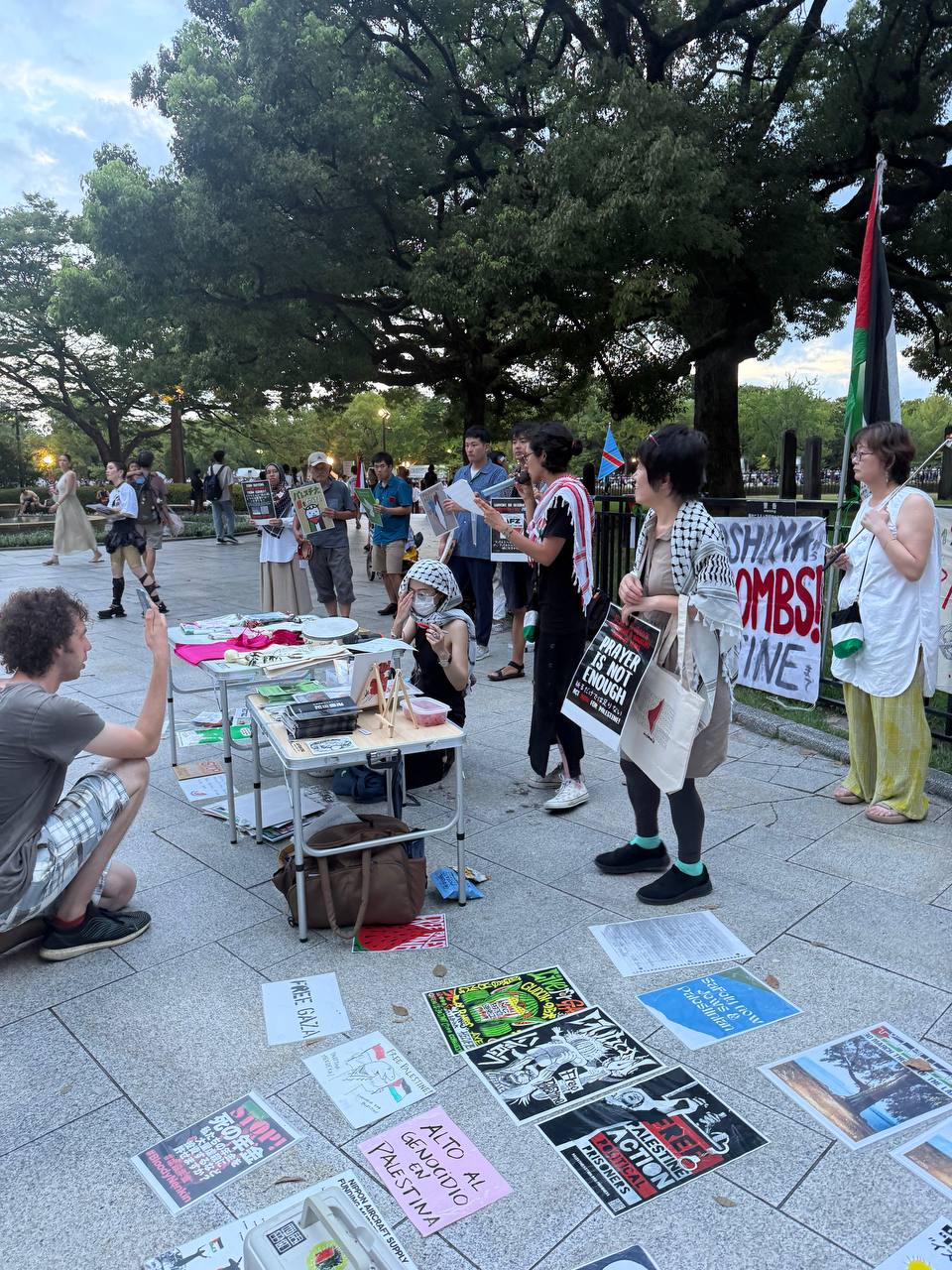
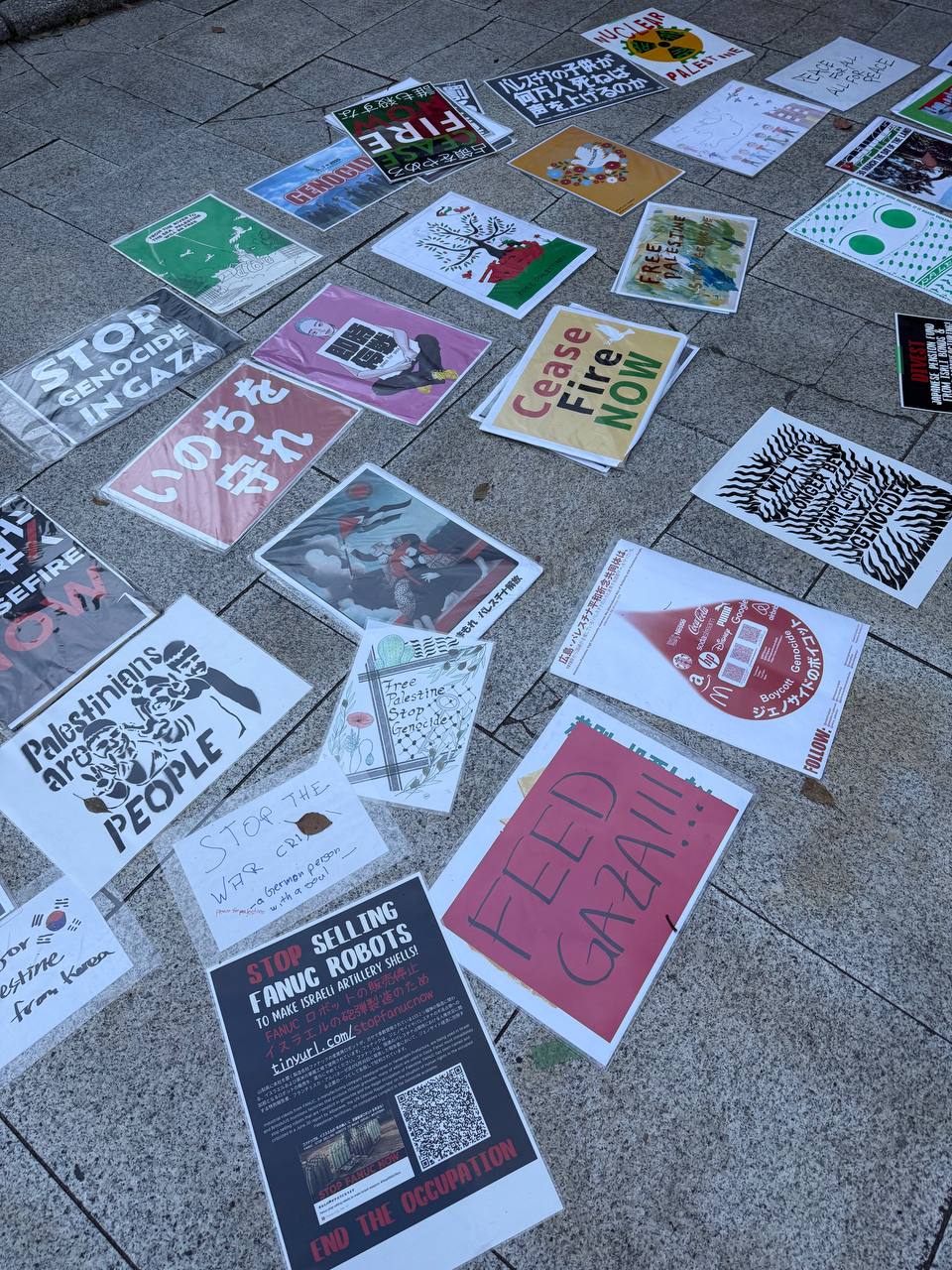
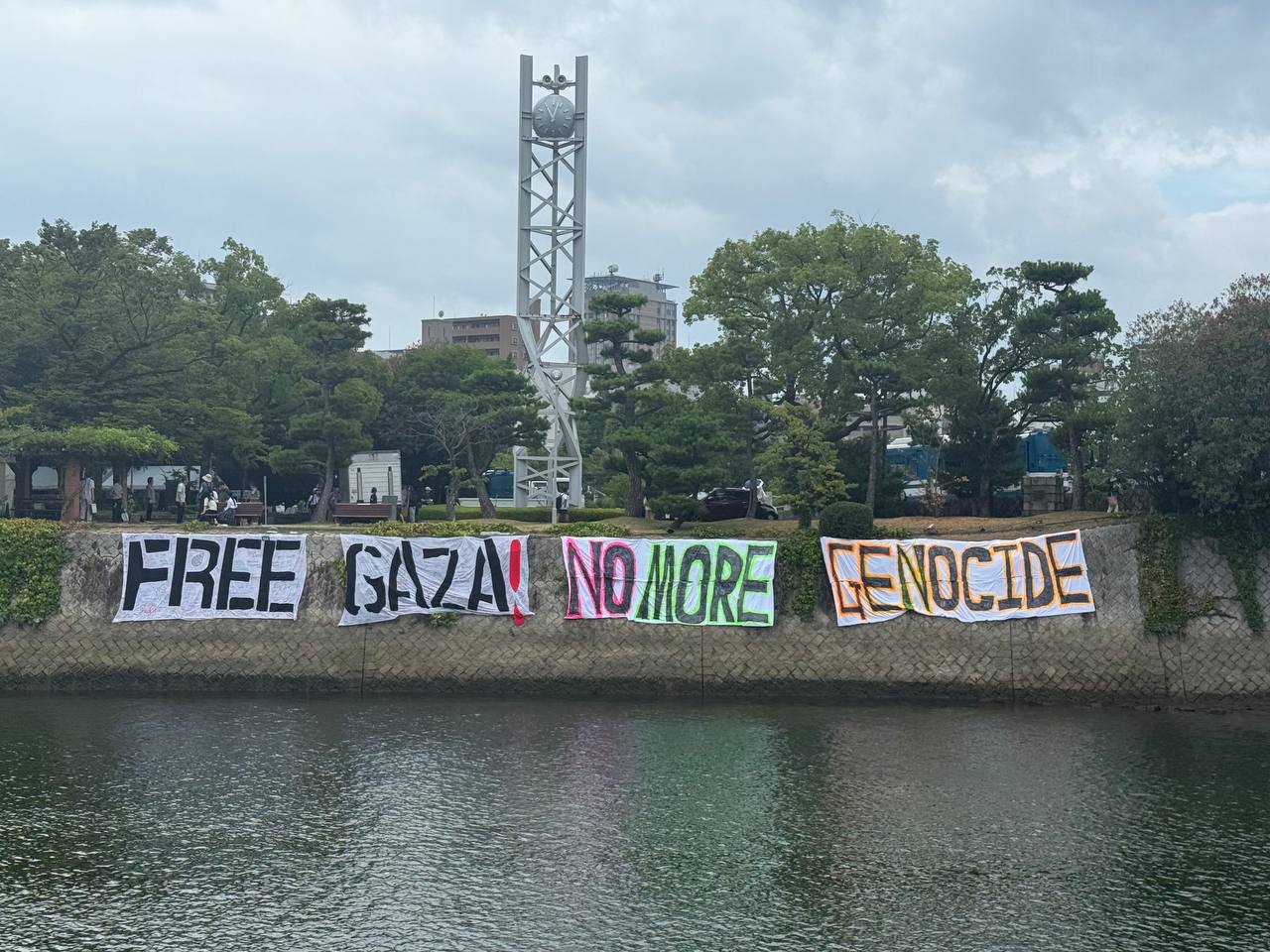
Conclusion on the 80th Anniversary of the Hiroshima Atomic Bomb
I personally planned this trip specifically to coincide with the anniversaries of not just Hiroshima, but also Nagasaki. Partly this was pure business, but more importantly I felt and now indeed have seen that this will be the last major anniversary before all of the survivors have deceased.
Sadly when that happens these things, like World War One has become, are just footnotes in history. Yet while it was very interesting hearing and reading about the terrible tragedy there were also elements of the “museum” that we visited. And that is that while the horrors are justly talked about there is quite literally zero discussion about how the war started or Japanese conduct during it.
Afterwards we headed to Lopez, one of the best restaurants in the city, if not Japan, and continued with our lives, much how Hiroshima does on every other day of the year.
Another true Extreme day in Japan…
Click to check out our Japan Tours.



